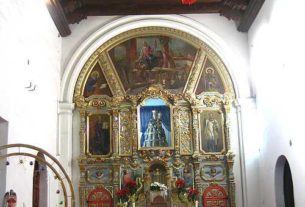Mexican Kitchen
April is a warm month in Mexico and, while some people choose to spend time at the beach, many others prefer to stroll the streets of the beautiful colonial cities.
One of the most architecturally impressive of all, having originated during the era of Spanish colonization, is 400-year-old Aguascalientes, known for its magnificent public buildings, its cleanliness, and the San Marcos Gardens, center of the oldest, most famous fair in Mexico, the San Marcos Fair. Capital of the state of the same name, Aguascalientes has been hosting the fair since 1828, and the tradition itself dates all the way back to the livestock exhibition and religious festival that began in 1604. In 1958, President Adolfo Lopez Mateos elevated the fair to the rank of “national.”
The Feria Nacional de San Marcos is the largest in the country and a significant contributor to the national economy. Attracting thousands of visitors each April, the event features a gaming casino that operates only during the fair, and a great variety of entertainment, exhibitions, rodeos, bullfights and cockfights, music and dancing, eating and drinking.
Whether participating in the traditional Mexican musical gatherings called tamboras or taking in the entries at the National Contest for Young Artists, fair goers will be met at every turn with tempting gastronomical offerings. Besides the regional specialties of Aguascalientes, there is a wide range of food that collectively represents the national menu, the dishes that have become part of Mexican cultural identity – all manner of tacos and enchiladas, quesadillas, tostadas, tamales, gorditas, mole, carnitas and more.
There is also a huge selection of sweets: candied fruit and nuts, coconut candies, flan, buñuelos, churros, ice cream, ices and gelatins, plus candy made of pumpkin seeds, sesame seeds and amaranth. To drink, there are fruit aguas made from lime, chia and hibiscus. There is the rice or melon seed-based drink called horchata, along with atole, chocolate, and the sweet, cinnamon infused café de olla.
There is also a wine pavilion where samples from local vintners are offered, a reflection of Aguascalientes’ history of winemaking. The state, especially the rural areas outside the capital city, was the first producer of grapes and wine in the country, and although wine making does not have the economical importance it held during colonial times, the historical significance of the vendimia, or grape harvest, is celebrated at the wine pavillion. Aguascalientes also produces brandy and fruit liqueurs, with 80% of the grape harvest used for distillation.
Besides Mexico’s national dishes, fruit drinks and wine, the fair gives the visitor a chance to try Aguascalientes’ regional recipes. Settled by the Spaniards, and later populated by the descendents of the French soldiers who occupied the city during that country’s occupation of Mexico, Aguascalientes has a distinctly European heritage. This is reflected in many of the local specialties, such as chicken in wine sauce and the sophisticated fruit sauces served with both chicken and pork. The region also has its signature versions of chocolate mole and enchiladas rojas.
Because it is a rich livestock raising area, the regional menu leans heavily toward meat dishes, such as barbequed and stewed mutton, barbacoa de lomo (barbequed filet mignon), lechón (baked suckling pig) and cordero asado, boned leg of lamb stuffed with rice, spices and fruit. The combination of fruit and meat is a culinary characteristic of Aguascalientes, not surprising given its abundance of fruit orchards and vineyards.
Aguascalientes ranks first in the production of guava in Mexico, with most of it grown in the semi-tropical area around Calvillo, just a little over thirty miles west of the capital. Guava, along with grapes and peaches, plays an important role in the regional cuisine, and nearly all of the desserts incorporate fruit, either fresh or dried. Orange cake, mango cake, peach tart, guava gelatin, mamey pudding, and rollo de manzana, resembling apple strudel, are some of the best loved homemade desserts.
The San Marcos Fair is always centered around the feast day of its patron saint on April 25. This year’s fair runs from April 19- May 18, 2008. Fairgoers might also be interested in visiting the wineries, the historic ex-haciendas, and the hot springs for which this small state, nestled between Zacatecas and Jalisco, was named. Those not getting a chance to visit Aguascalientes can try the following recipes at home.
- Pollo de Aguascalientes: Chicken with Fruit Sauce
- Chambarete Español: Spanish Style Beef and Vegetable Stew
- Flan de Queso y Guayaba: Cheese and Guava Flan


